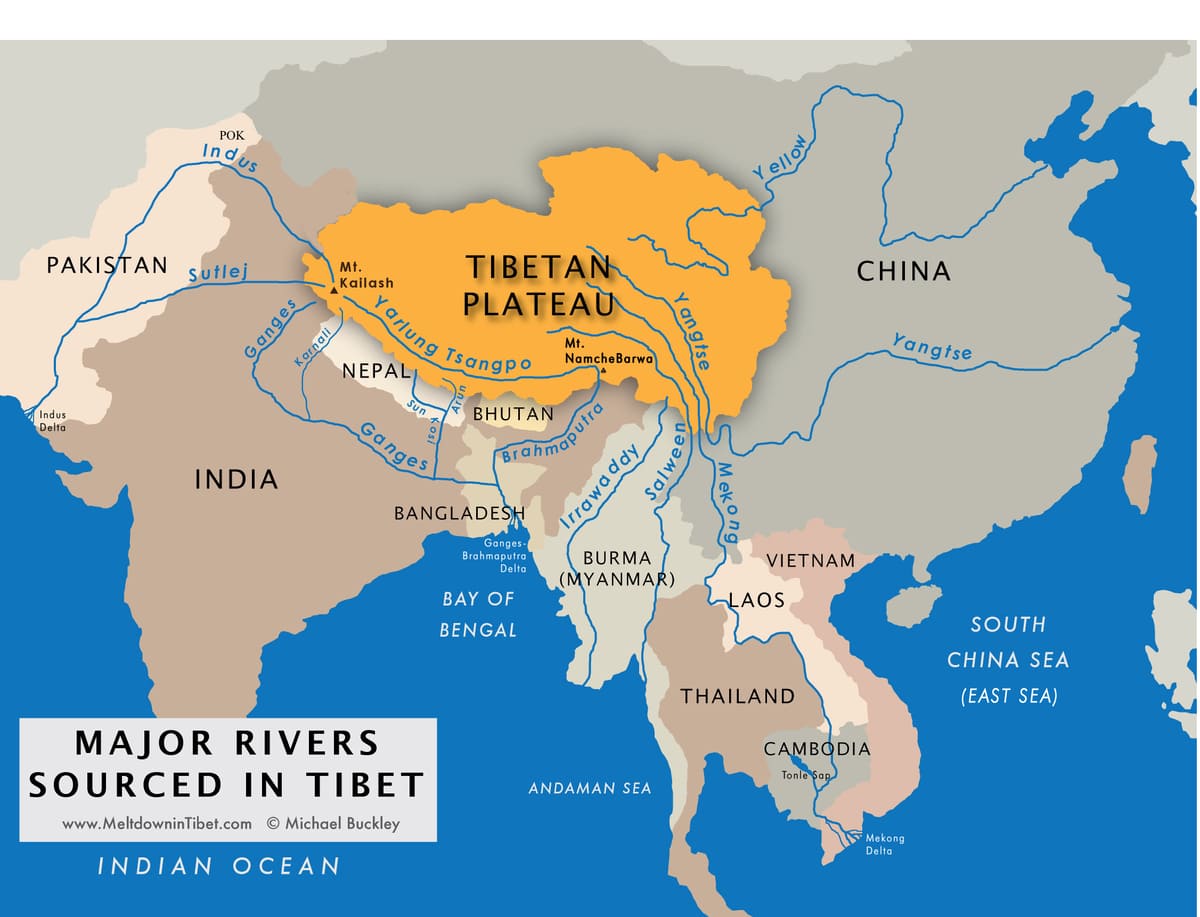BLOG
November 29th, 2011
Via OnEarth magazine, an article looking at the impact of dams on Tibetan watersheds:
Ten million years ago, Asia and the Indian subcontinent collided giving rise to the world’s highest mountains with the largest plateau, Tibet. Only recently have scientists pieced together the workings of the complex planetary engine that drives climate, in which the Tibetan Plateau plays a crucial role such as in the seasonal monsoon cycle of Asia.
Since Tibet’s 41,000 glaciers and vast expanse of permafrost hold the world’s largest concentration of water outside of the poles, Tibet is known as the “third poleâ€. This “third pole†is a major source of water for nearly half the world’s population with its glaciers and permafrost. Tibet is the fountainhead for the major six rivers in Asia: Indus, Brahmaputra, Salween, Mekong, Yangtze, and Yellow.
Water is one of the most crucial basic necessities of life and every living creature needs it to survive. Since water is a way of life and an inalienable human right, it becomes a social issue when proper access is denied. This creates a domino effect of many social injustices such as poverty, unequal access to education, limited access to staple food, and housing security.
For centuries, civilizations have sustained, drawn inspirations, and prospered directly due to their access to water. For example, in Cambodia, the Mekong River, starting from Tibet, is the “heartbeat of the nation.” As the third largest fresh flowing river in the world, the Mekong is the least modified of all the major rivers due to decades of warfare. The river flows uninterrupted and the fish and people have prospered. As Fred Pierce writes in When Rivers Run Dry, “The people live off wild freshwater fish to an extent unknown anywhere. Even the poorest dine like kings.” It secures the well being for the people. As a result, one of the poorest nations in the world is the one of the most well fed. The Cambodians have a very sustainable relationship with the Mekong. “Fishermen are the true friends of fishes because they prevent farmers from felling the flooded forest and converting it into rice paddies.” The river employs four fifths of the nation’s population through fishing. Historically, the ancestors of contemporary Cambodians, under the Khmer Empire, prospered because of the fish in the lake and the rice grown on its shores. Carvings on historical structures depict the pivotal role water played in the empire’s prosperity.
Today as the PRC economy continues to rise miraculously in the global market, it is proving itself through undertaking lavish infrastructure projects such as the world largest dams. It is also China’s stake in becoming a leader in green technology.
Beijing is damming the upper reaches of the Mekong River with the world’s largest arch dam, Xiaowan Dam. Building dams has caused unannounced floods and wrecked local fisheries, causing catastrophic consequences. For the fertility of the Mekong flood and the entire ecological infrastructure on which the Cambodian rural life is built, “The river is the road and the annual flood is the basis of their lives.” In addition, Tonle Sap used to once have the largest freshwater fish population, today the fish continue to decline in numbers. When the people do not have access to their water in rural areas then they will be forced to migrate to overcrowded cities.
Similar to the importance of Mekong for the Cambodians, the Indus River in Pakistan has fed the population for centuries. The Indus waters 90 percent of the crops and produces half of Pakistan’s electricity. Due to the hydrologic regime, the Indus river valley plains are being waterlogged with salt that is poisoning the crops. Farmlands are depleting as freshwater access falls. In order to feed themselves, Pakistani farmers are moving into large cities like Karachi. The majority of migrants live in lawless slums, which serve as breeding ground for al Qaeda and other terrorist groups.When access to drinkable freshwater diminishes people are forced to migrate into overcrowded cities in which they will have to struggle to survive in low-income neighborhoods. These slums have history of being unsafe and poor access to health care and nutritious food. In order sustain themselves, the migrants will have to work in low-skilled service sector jobs in which they are most likely to be overworked and underpaid.Fresh water is not only a matter of prosperity for a culture for the need for water is even more basic than that. Denying access to it leads to death from thirst and starvation (famines often begin with droughts). A person can live for more than a month without food but only a little over a week without water. Inability to access clean water leads to death from disease; many epidemics have their origin in water borne contamination. Millions have died when their water supplies failed or became contaminated. So it may not only a matter of prosperity for a culture, it may a matter of life and death. With the source of these rivers in Tibet, protecting the Tibetan environment is important because altering the head watershed can be very deadly for the billions downstream.


